Figure shows an ideal fluid flowing through a uniform cross-sectional tube in the vertical tube with liquid velocities vA and vB and pressure PA and PB. Knowing that offers no resistance to fluid flow then which of the following is true.
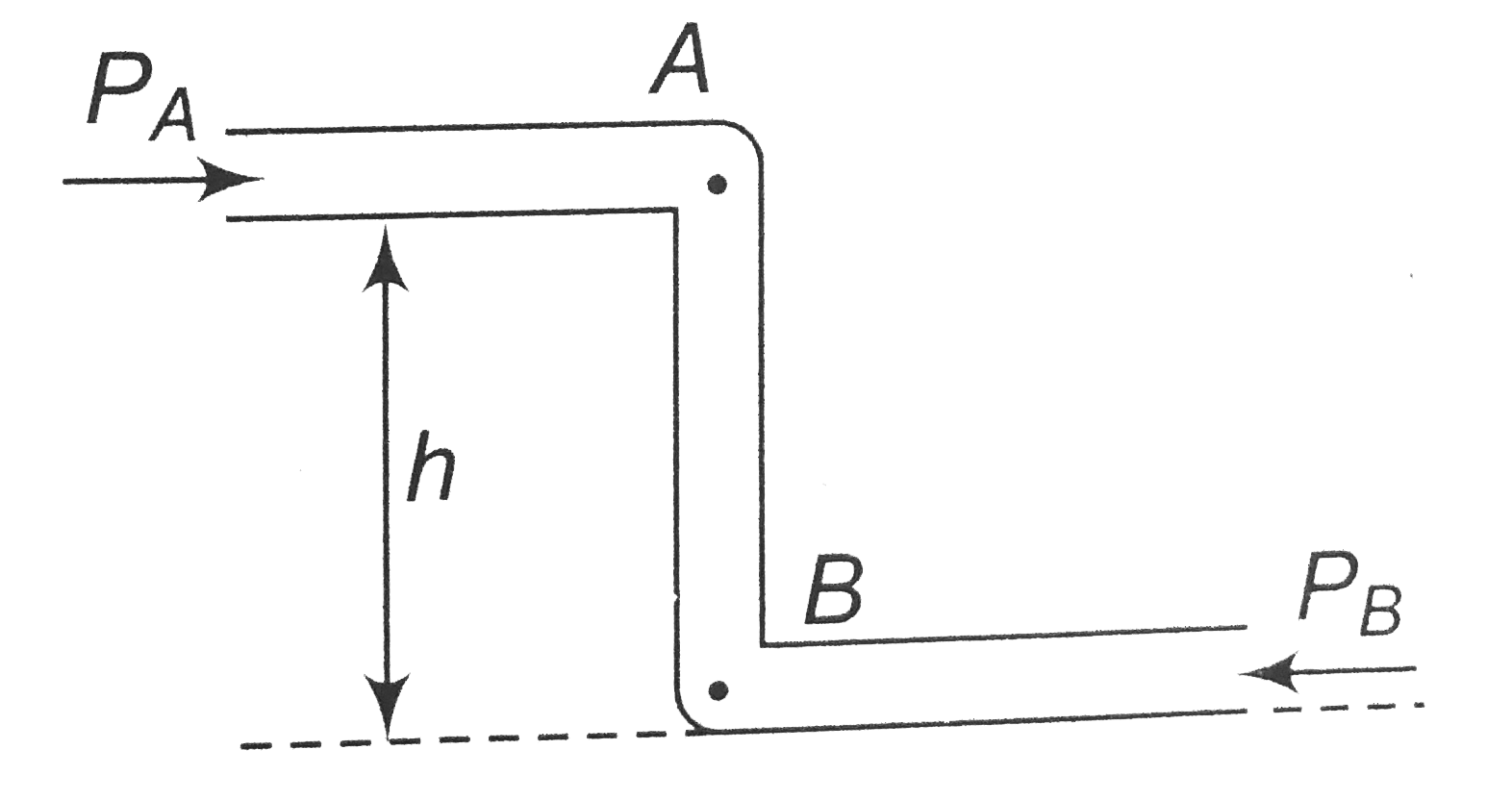
PA<PB
PB<PA
PA=PB
none of these
The correct Answer is:A
vA=vB (since area is uniform)
from Bernoulli's principle
v2A2+gh+pAρ=v2B2+0+pBρ⇒PA<PB.
Topper's Solved these Questions
- BOOK - A2ZCHAPTER - FLUID MECHANICSEXERCISE - Application Of Bernoulli'S Theorem And Velocity Of Efflux19videos
FLUID MECHANICS
- BOOK - A2ZCHAPTER - FLUID MECHANICSEXERCISE - Problems Based On Mixed Concepts29videos
FLUID MECHANICS
- BOOK - A2ZCHAPTER - FLUID MECHANICSEXERCISE - Buoyancy And Floatation40videos
FLUID MECHANICS
- BOOK - A2ZCHAPTER - GENERAL KINEMATICS AND MOTION IN ONE DIMENSIONEXERCISE - Chapter Test30videos
GENERAL KINEMATICS AND MOTION IN ONE DIMENSION
Similar Questions
In this figure, an ideal liquid flows through the tube having uniform area of cross-section and is held in vertical plane. Find the ratio of speed of liquid at A and B and also find the pressure difference between- these points.
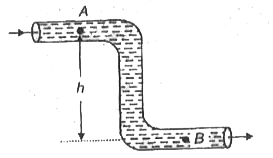 View Solution
View SolutionAn ideal fluid flows through a pipe of circular cross - section with diameters 5 cm and 10 cm as shown in the figure. The ratio of velocities of fluid at A and B is
 View Solution
View Solution
Knowledge Check
- Question 1 - Select One or More
In the figure, an ideal liquid flows through the tube, which is of uniform cross section. The liquid has velocities vA and vB, and pressures PA and PB at the points A and B, respectively. Then
 AvA=vBBvA>vBCPA=PBDPB>PA
AvA=vBBvA>vBCPA=PBDPB>PA - Question 2 - Select One
An ideal fluid is flowing through the given tubes which is placed on a horizontal surface. If the liquid has velocities VA and VB and pressure PA and PB at point A and B respectively, then the correct relation is (A and B are at same height from ground level. the figure shown is as in the system is seen from the top):
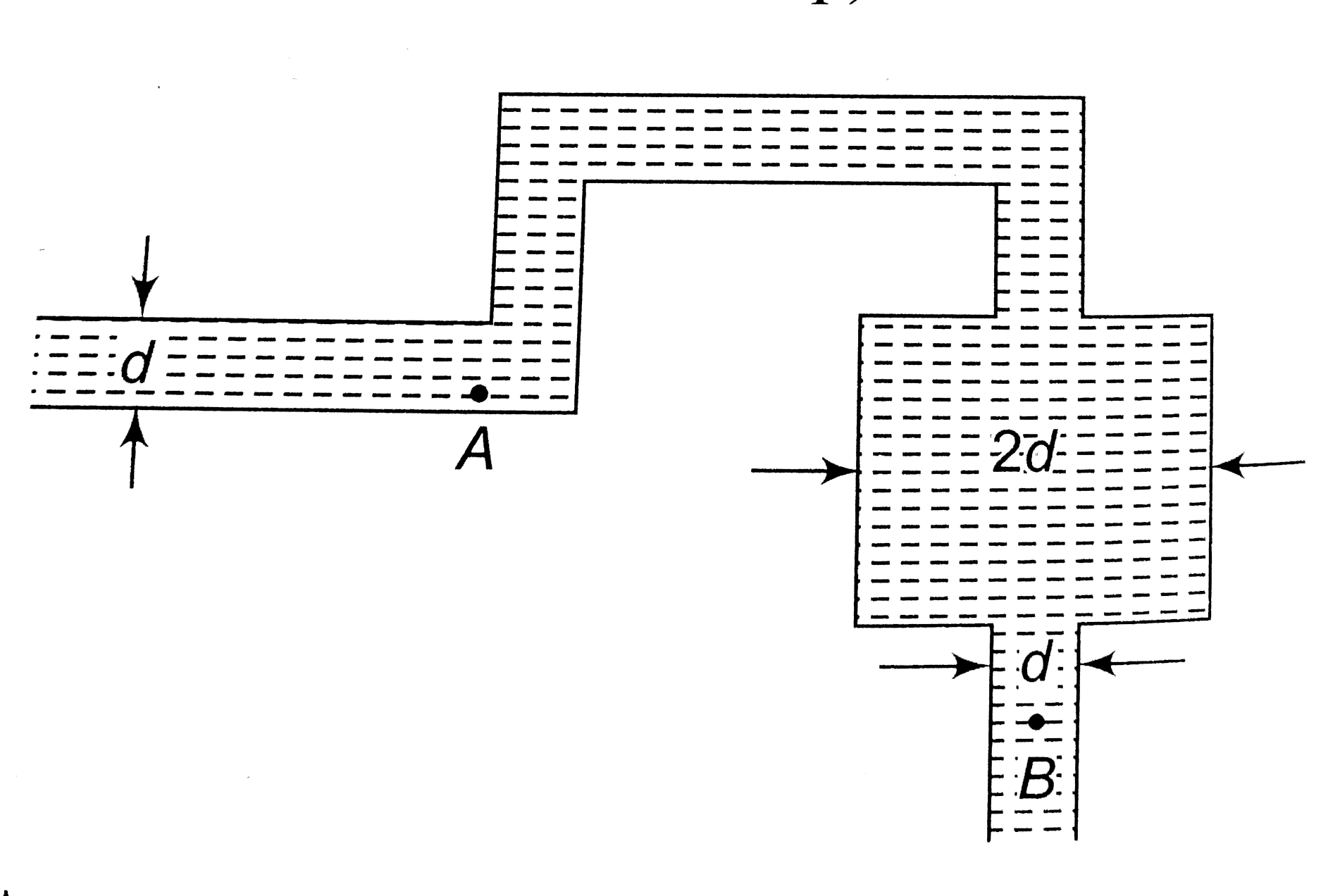 AVA>VB,PA<PBBVA<VB,PA>PBCVA=VB,PA=PBDVA>VB,PA=PB
AVA>VB,PA<PBBVA<VB,PA>PBCVA=VB,PA=PBDVA>VB,PA=PB - Question 3 - Select One
An ideal liquid flows through a horizontal tube of variable diameter .The pressure is lowest where the :
Avelocity is highestBvelocity is lowestCdiameter is largestDNone of these
An ideal fluid flows through a pipe of circular cross section with diameters 5 cm and 10 cm as shown. The ratio of velocities of fluid at A and B is
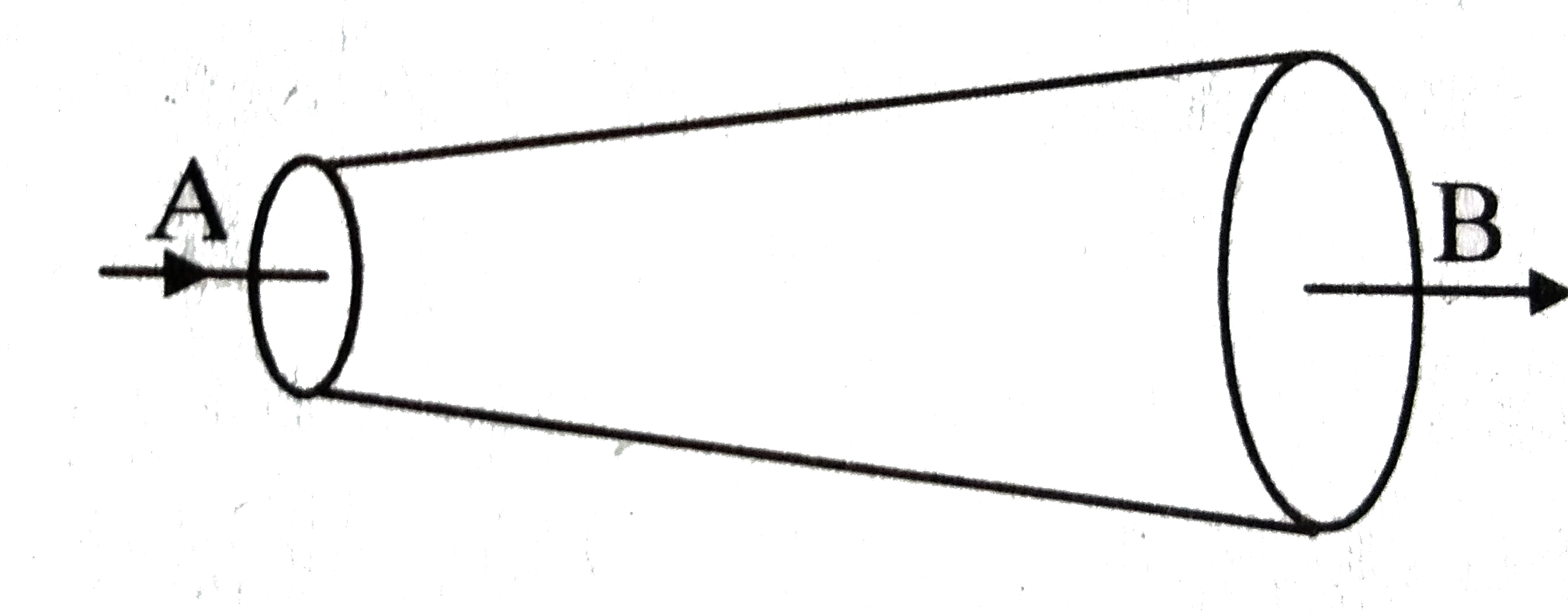 View Solution
View SolutionFor a fluid which is flowing steadily, the level in the vertical tubes is best represented by
View SolutionAn incompressible liquid flows through a horizontal tube as shown in the figure. Then the velocity 'v' of the fluid is:
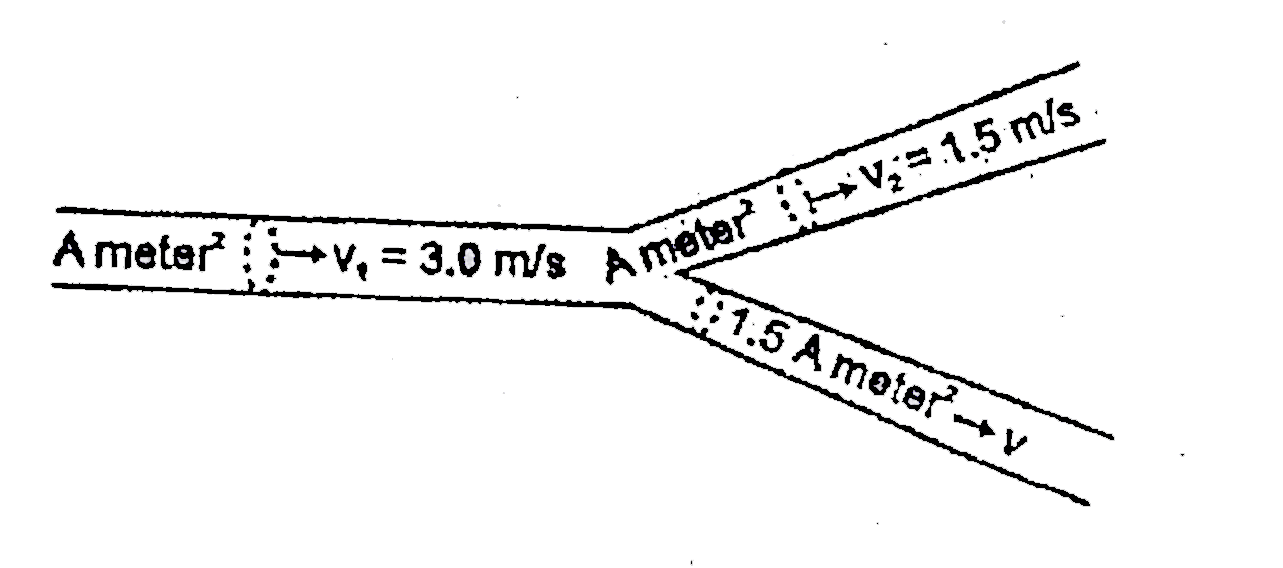 View Solution
View SolutionIn the figure, an ideal flows through the tube, which is of uniform cross-section. The liquid has velocities vA and vB and pressures pA and pB at points A and B respectively.
(i) vA=vB
(ii) vB>vA ltbr gt (iii) pA=pB
(iv) pB>pA.
 .View Solution
.View SolutionAn incompressible liquid flows through a uniform cross section tube with velocity 12 cm/s. the thickness of liquid layer is 0.8 cm then velocity of gradient of flow is
View Solution

